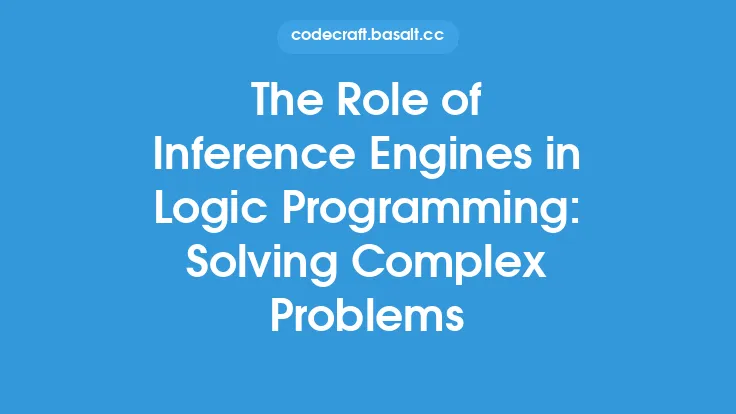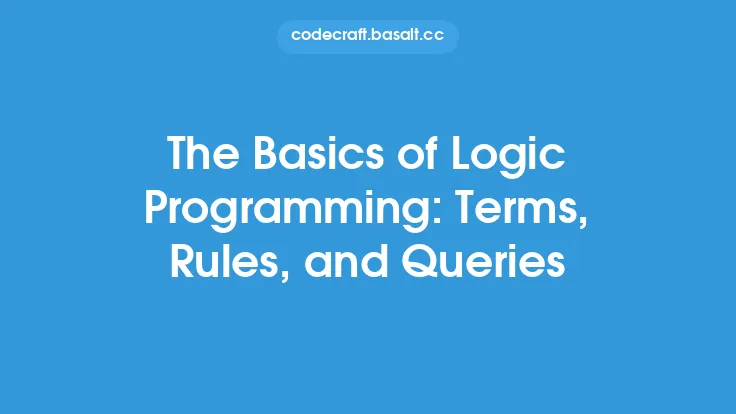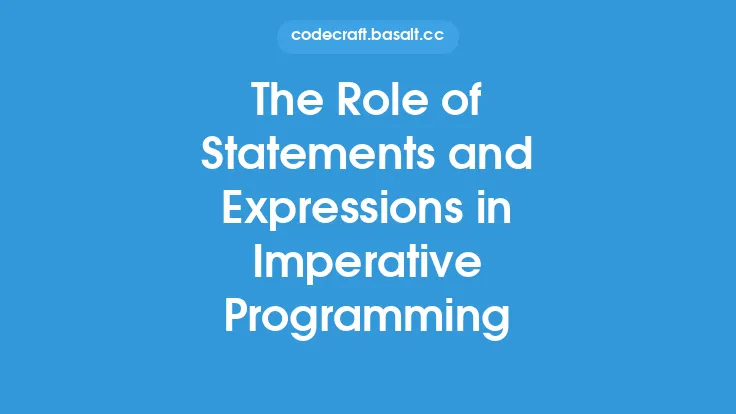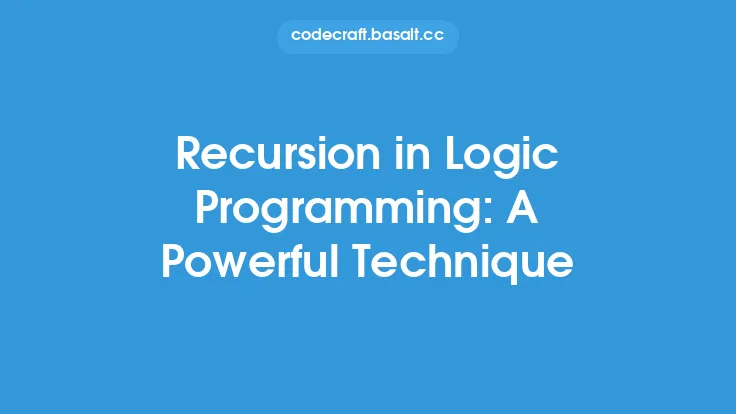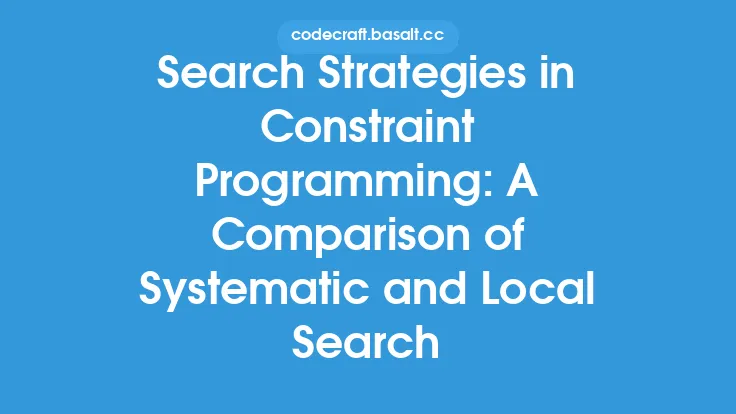Logic programming is a programming paradigm that is based on formal logic. It is a powerful tool for solving complex problems, particularly those that involve reasoning and inference. One of the key concepts in logic programming is the idea of controlling the search, which is the process of finding a solution to a problem by exploring a space of possible solutions. In this article, we will explore the concept of "cut and fail" in logic programming, which is a technique used to control the search and improve the efficiency of logic programs.
Introduction to Cut and Fail
The "cut and fail" technique is a fundamental concept in logic programming that allows programmers to control the search and avoid unnecessary computations. The "cut" operator is a special predicate that is used to prune the search tree, while the "fail" operator is used to indicate that a particular branch of the search tree has failed. By using these operators, programmers can guide the search and focus on the most promising areas of the search space.
How Cut and Fail Work
The "cut" operator is used to prune the search tree by eliminating branches that are known to be unsuccessful. When the "cut" operator is encountered, the search engine will stop exploring the current branch and return to the previous choice point. This allows the programmer to avoid exploring branches that are known to be unsuccessful, which can significantly improve the efficiency of the search.
The "fail" operator, on the other hand, is used to indicate that a particular branch of the search tree has failed. When the "fail" operator is encountered, the search engine will backtrack to the previous choice point and try an alternative solution. This allows the programmer to explore different branches of the search tree and find a solution that satisfies the given constraints.
Controlling the Search with Cut and Fail
The "cut and fail" technique can be used to control the search in a variety of ways. For example, a programmer can use the "cut" operator to prune the search tree and avoid exploring branches that are known to be unsuccessful. This can be particularly useful in problems where there are many possible solutions, but only a few of them are valid.
The "fail" operator can be used to implement a technique called "negation as failure", which is a common technique used in logic programming. This technique involves assuming that a particular predicate is false if it cannot be proven to be true. By using the "fail" operator, a programmer can implement this technique and avoid exploring branches that are known to be unsuccessful.
Example Use Cases
The "cut and fail" technique has a wide range of applications in logic programming. For example, it can be used to implement expert systems, which are computer programs that mimic the decision-making abilities of a human expert. By using the "cut and fail" technique, a programmer can control the search and focus on the most promising areas of the search space, which can significantly improve the efficiency of the system.
Another example use case is in the implementation of planning systems, which are computer programs that can plan a sequence of actions to achieve a given goal. By using the "cut and fail" technique, a programmer can control the search and avoid exploring branches that are known to be unsuccessful, which can significantly improve the efficiency of the system.
Implementation in Prolog
The "cut and fail" technique is implemented in Prolog, which is a popular logic programming language. In Prolog, the "cut" operator is represented by the "!" symbol, while the "fail" operator is represented by the "fail" predicate.
For example, the following Prolog program uses the "cut and fail" technique to implement a simple expert system:
rule1(X) :- condition1(X), !.
rule1(X) :- condition2(X), fail.
In this program, the "cut" operator is used to prune the search tree and avoid exploring branches that are known to be unsuccessful. The "fail" operator is used to implement the "negation as failure" technique and avoid exploring branches that are known to be unsuccessful.
Conclusion
In conclusion, the "cut and fail" technique is a powerful tool for controlling the search in logic programming. By using this technique, programmers can guide the search and focus on the most promising areas of the search space, which can significantly improve the efficiency of logic programs. The "cut and fail" technique has a wide range of applications in logic programming, including expert systems and planning systems. By understanding how to use this technique, programmers can write more efficient and effective logic programs.
Future Directions
Future research in logic programming is likely to focus on developing new techniques for controlling the search and improving the efficiency of logic programs. One area of research is in the development of new search algorithms, such as stochastic search algorithms, which can be used to explore the search space more efficiently.
Another area of research is in the development of new programming languages and tools, such as visual programming languages, which can make it easier for programmers to write and debug logic programs. By developing new techniques and tools, researchers can make logic programming more accessible and useful for a wide range of applications.
Best Practices
To get the most out of the "cut and fail" technique, programmers should follow best practices for writing logic programs. One best practice is to use the "cut" operator sparingly, as it can prune the search tree and eliminate potential solutions. Another best practice is to use the "fail" operator to implement the "negation as failure" technique, as it can avoid exploring branches that are known to be unsuccessful.
By following these best practices, programmers can write more efficient and effective logic programs that take advantage of the "cut and fail" technique. Additionally, programmers should always test and debug their logic programs thoroughly to ensure that they are working correctly and efficiently.
